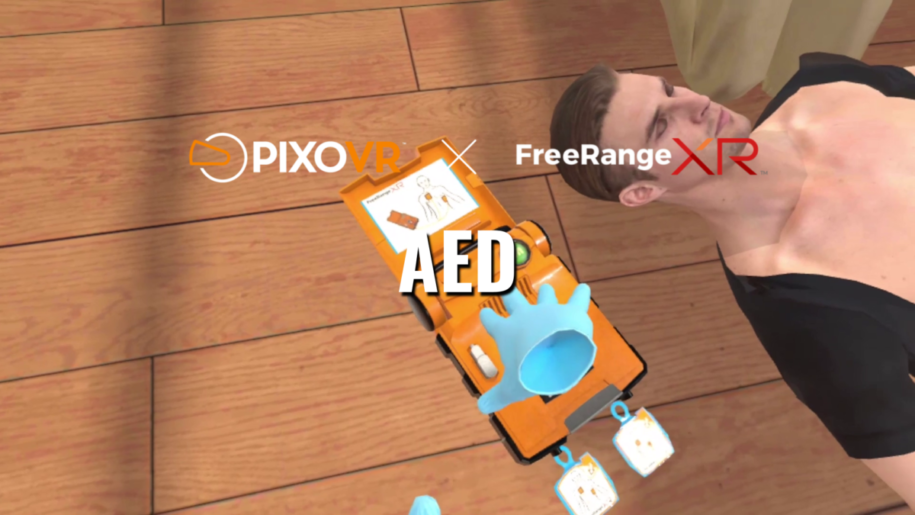The following was submitted by PIXO content partners: FreeRangeXR
Out of the hundreds of thousands of cardiac arrests happening outside of hospitals in the U.S. each year, over 350,000 in 2020 alone, only about 10% of the victims survive. Proper AED (automated external defibrillator) and CPR (cardiopulmonary resuscitation) implementation can more than double a victim’s chance of survival. So the team at FreeRangeXR set out to develop an AED training that would improve the students’ retention and ultimately to save lives. To create the most effective training module possible, we started by bringing in subject matter experts in the fields of safety, training, first aid, and OSHA requirements. We then devoured literature from medical organizations and from AED products themselves. We cemented an understanding of what we need to accomplish, but also where we can improve the training with virtual reality.
Next, we focused on how to design the module to maximize retention of the information. When we measure a student’s success, we measure if they are taking the proper steps, not how good they are at VR. Just like when you administer tests, you want to make sure you test a student’s knowledge, not how good they are at taking tests. For example, in real life, the placement of the AED pads on the victim’s chest has to be precise, but some people are not familiar with using VR tools, so we don’t penalize them on how accurately they can place the pads. As long as the student aims in the correct area, the training module will autocorrect the placement of the pads. We try to measure their intent and not require them to struggle with the controls. This type of autocorrect, sometimes called aim assist in the world of video games, is only one such example of the gamification of teaching AED. The development team at FreeRangeXR includes industry veterans with decades of experience in computer science and in the art and science of video games development. Our development team brought in several gamification tenets to the design:
Doing is better than hearing a lecture or watching a video. A lot of safety or instructional simulations take their cues from slide shows or books. Those are information heavy and present the information in ways that are sometimes difficult to digest. We concentrate on getting the users to learn by doing, making mistakes in the safety of VR, and trying again. Seeing the consequences of mistakes in real time has more impact than getting a poor grade on a quiz.
You don’t know what the user is going to do. They will not always follow the instructions you give them (if indeed they read or listen to them in the first place) so the simulation needs to be flexible and forgiving.
People like to see their successes. Each of our lessons has measurable objectives that are shared with the user and any trainer. This inspires the users to want to do better.
The last piece of the design process was ensuring a deep level of immersion, one that enhances the training. Bringing users into a realistic simulation was vital to the development team. Our training is spatially located, so what the sounds are and where they’re coming from is as essential to the training as the users’ actions. For example, one of the first things you do once you ascertain that an AED is needed is have another person call emergency services. In real life though, this often fails because a person may call out, “someone call 9-1-1” but get no verification that it was done. We require them to get such verification to pass the lesson. Students cement their understanding that each step is essential. In our module, you keep eye contact on the person who is supposed to call 9-1-1 and you can hear them in relation to you in the room. Throughout the room is ambient noise, because there is no space in the real world that’s just quiet. You have outside noise, the humming of air conditioners, and elevator dings – and so that’s all simulated in there too.
The result of all this painstaking attention to detail? A revolutionary way to learn about the administration of Automated External Defibrillation and first aid. One that is cost efficient, effective, and engaging.
Learn more about FreeRangeXR and their offerings here.

Learn More.



Leave a Reply
You must be logged in to post a comment.